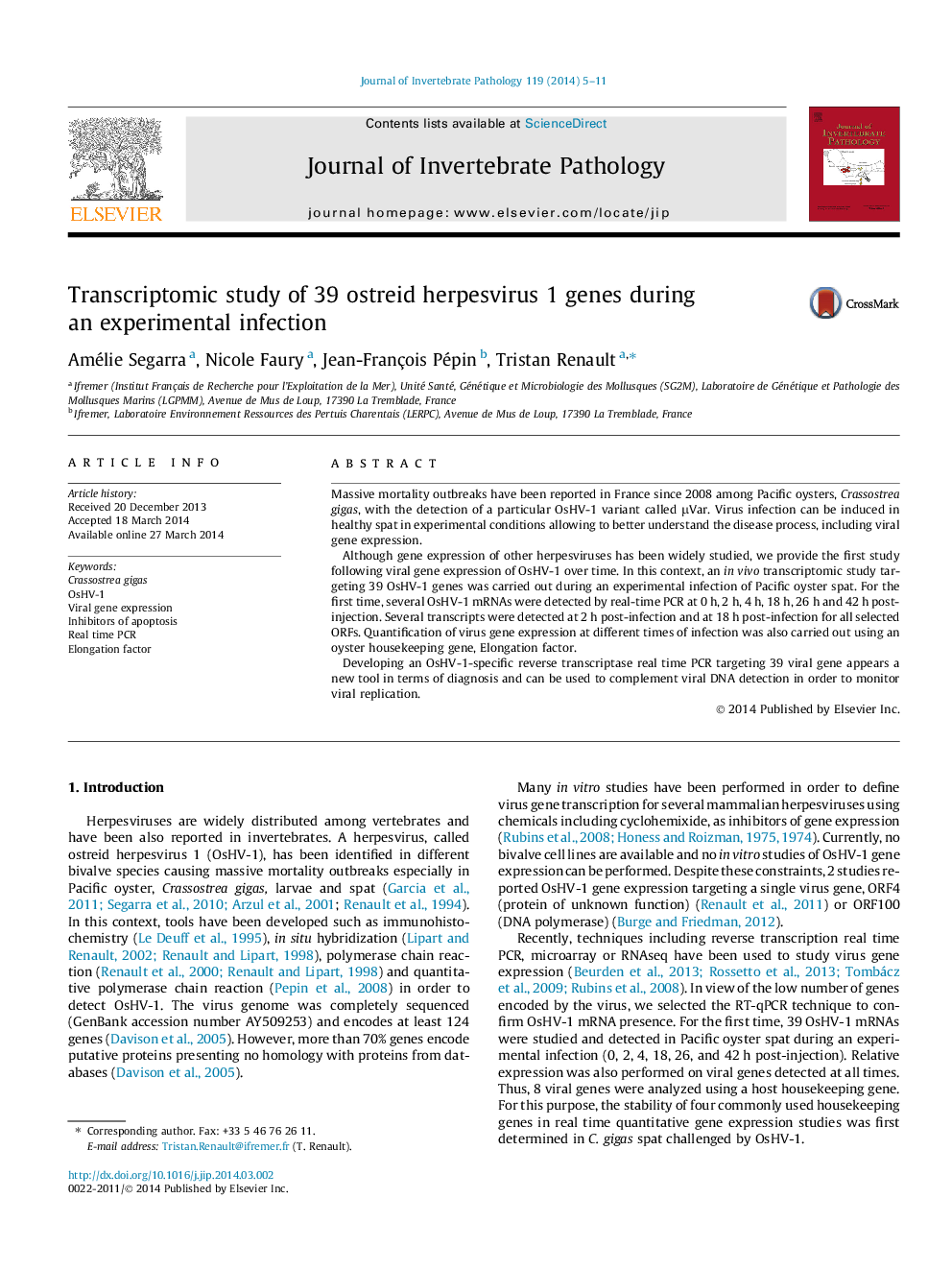| Article ID | Journal | Published Year | Pages | File Type |
|---|---|---|---|---|
| 4557710 | Journal of Invertebrate Pathology | 2014 | 7 Pages |
•We studied the detection and expression kinetics of 39 OsHV-1 genes.•Viral RNA detection would allow much better understanding on the viral cycle.•OsHV-1 mRNAs were detected during the early hours of infection, 2 and 4 h pi.•Viral mRNAs were all detected at 18 h post-infection.
Massive mortality outbreaks have been reported in France since 2008 among Pacific oysters, Crassostrea gigas, with the detection of a particular OsHV-1 variant called μVar. Virus infection can be induced in healthy spat in experimental conditions allowing to better understand the disease process, including viral gene expression.Although gene expression of other herpesviruses has been widely studied, we provide the first study following viral gene expression of OsHV-1 over time. In this context, an in vivo transcriptomic study targeting 39 OsHV-1 genes was carried out during an experimental infection of Pacific oyster spat. For the first time, several OsHV-1 mRNAs were detected by real-time PCR at 0 h, 2 h, 4 h, 18 h, 26 h and 42 h post-injection. Several transcripts were detected at 2 h post-infection and at 18 h post-infection for all selected ORFs. Quantification of virus gene expression at different times of infection was also carried out using an oyster housekeeping gene, Elongation factor.Developing an OsHV-1-specific reverse transcriptase real time PCR targeting 39 viral gene appears a new tool in terms of diagnosis and can be used to complement viral DNA detection in order to monitor viral replication.
Graphical abstractFigure optionsDownload full-size imageDownload as PowerPoint slide
